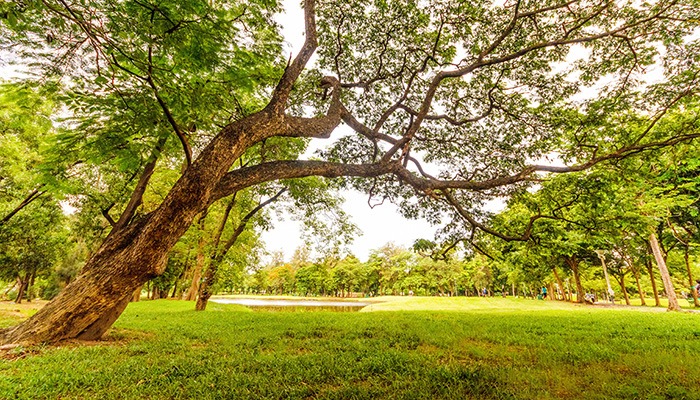“We cannot divorce our social circumstances for our health”
Erasmus is famed for his quote “prevention is better than cure” yet modern healthcare places emphasis and resources towards cure and expensive complications. Perhaps disease-care would be a more appropriate moniker. Although life span has risen over the last number of decades health span has been declining. Furthermore the well intentioned healthcare that we deliver today is simultaneously a major contributor to the climate crisis. The carbon footprint of global health care would outstrip most countries, bar China and the USA1.
The adage that “genes load the gun, but environment pulls the trigger ” is supported by the Danish Twin study which estimates genes to account for only 20% of longevity and the remaining 80% due to lifestyle2. Migration studies are also supportive; Japanese immigrants to the United States develop chronic diseases at American rates3. There are commonalities in hot spots of longevity and health, known as Blue Zones, such as plant-based diets, regular exercise and not least their strong sense of community. Perhaps the one underlying condition that underpins the tsunami of human and environmental disease could be termed community atrophy. Perhaps that is where our future efforts should be concentrated.
What is Social Prescribing?
Social prescribing is “a means of enabling health professionals to refer patients with social, emotional or practical needs to a range of local, non-clinical services, often provided by the voluntary and community sector.”4
Recognising that health is determined primarily by a range of social, economic and environmental factors, social prescribing seeks to address people’s needs holistically by referring to a range of local, non-clinical services. Emotional and social problems are a recognized driver of over attendance to health services; a UK report stated “people don’t divide their problems into boxes- they often just turn to the nearest professional for help”.5 While healthcare professionals such as GPs are ideally situated to support their patients’ clinical needs, they are not always equipped to help them with non-clinical issues. GPs in England spend approximately 20% of their time on social issues that are not primarily about health5. A resulting medical approach to non-medical problems can be frustrating for all parties and wastes precious resources such as medication, manpower and time.
What does Social Prescribing look like?
Modern medicine is still catching up with the evidence of the benefits of structured supported and sustained contact with nature, but if the evidence base is sound then why not be referred for activities such as walking, craft or gardening? Such activities have more than evidence of psychological benefits but also a deepening of social connectedness and increased community resilience. Time spent in nature also has preventative qualities, by helping to maintain a sense of wellbeing, happiness and belonging6. The pathophysiology for chronic diseases such as heart disease is not statin-deficiency per se, rather it is our obesogenic environment twinned with our stressful and distracted lifestyles. Social prescribing aims to meet this pathology much further upstream than the pharmacy or the hospital bed, which both drive the majority of healthcare’s carbon emissions. Hence the attraction of social prescribing from a planetary health, and pragmatic, point of view.
As an example, if you find yourself with a mental health issue while living in Japan, the chances are the doctor will refer you to the local forest for some “forest bathing”.
There is a well-documented evidence base for using nature as a therapeutic agent with real and measurable psychological and physiological benefits i.e., lower cortisol levels, lower blood pressure, decreased stress levels and improved recovery7. We now see this play out in reality with planned green spaces now included in rehabilitation facilities, hospitals and care homes. It may sound woolly, but there is a hard evidence base for these green spaces. Cities with well-planned green spaces are measurably happier8.
Why should we care about Social Prescribing?
Social prescribing has the potential to unburden busy practices, improve community health, reduce healthcare professional burnout and also tackle healthcare unsustainability. The NHS in October 2020 committed to be a net zero organization by 2040 and we will surely follow suit. As medications make up the majority of emissions from primary care, preventative health via non-pharmacological means will need to be encouraged in Ireland. Prevention is not only better than cure; it is the only feasible solution to the ailments of the health system of the future and at its core is social prescribing.
References
- Karliner J, Slotterback S, Boyd R et al. Health Care’s Climate Footprint: How the health sector contributes to the global climate crisis and opportunities for action. Health Care Without Harm climate-smart health care series Green Paper Number One 2019.
- Herskind A, McGue M, Holm N et al. The heritability of human longevity: a population-based study of 2,872 Danish twin pairs born 1870-1900. Hum Genet 1996;96:319-323
- Shimizu H,Ross R, L. Bernstein L et al. Cancers of the prostate and breast among Japanese and white immigrants in Los Angeles County. Br J Cancer 1991; 63(6): 963–966.
- DrinkwaterC, Wildman J, Moffatt S. “Social prescribing” BMJ 2019; 364 :l1285
- kingsfund.org.uk/publications/social-prescribing
- Park B, Tsunetsugu Y, Kasetani T, et al. “The physiological effects of Shinrin-yoku (taking in the forest atmosphere or forest bathing): evidence from field experiments in 24 forests across Japan.” Environ Health Prev Med. 2010 Jan;15(1):18-26.
- Soga M, Gaston J, Yamaura Gardening is beneficial for health: A meta-analysis. Preventive Medicine Report 2017 (5) p92-99
- Houlden V, Weich S, Porto de Albuquerque J, Jarvis S, Rees K (2018)The relationship between greenspace and the mental wellbeing of adults: A systematic review. PLOS ONE 13(9): e0203000

